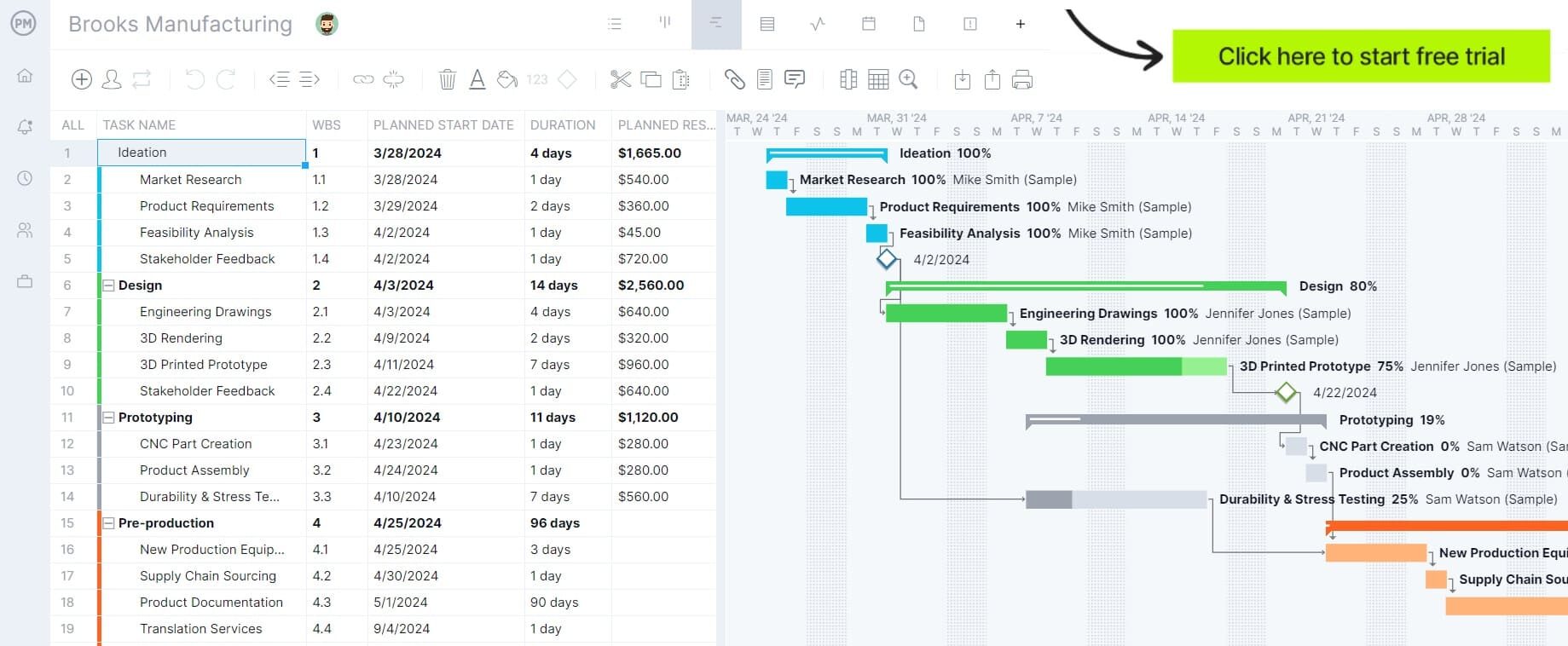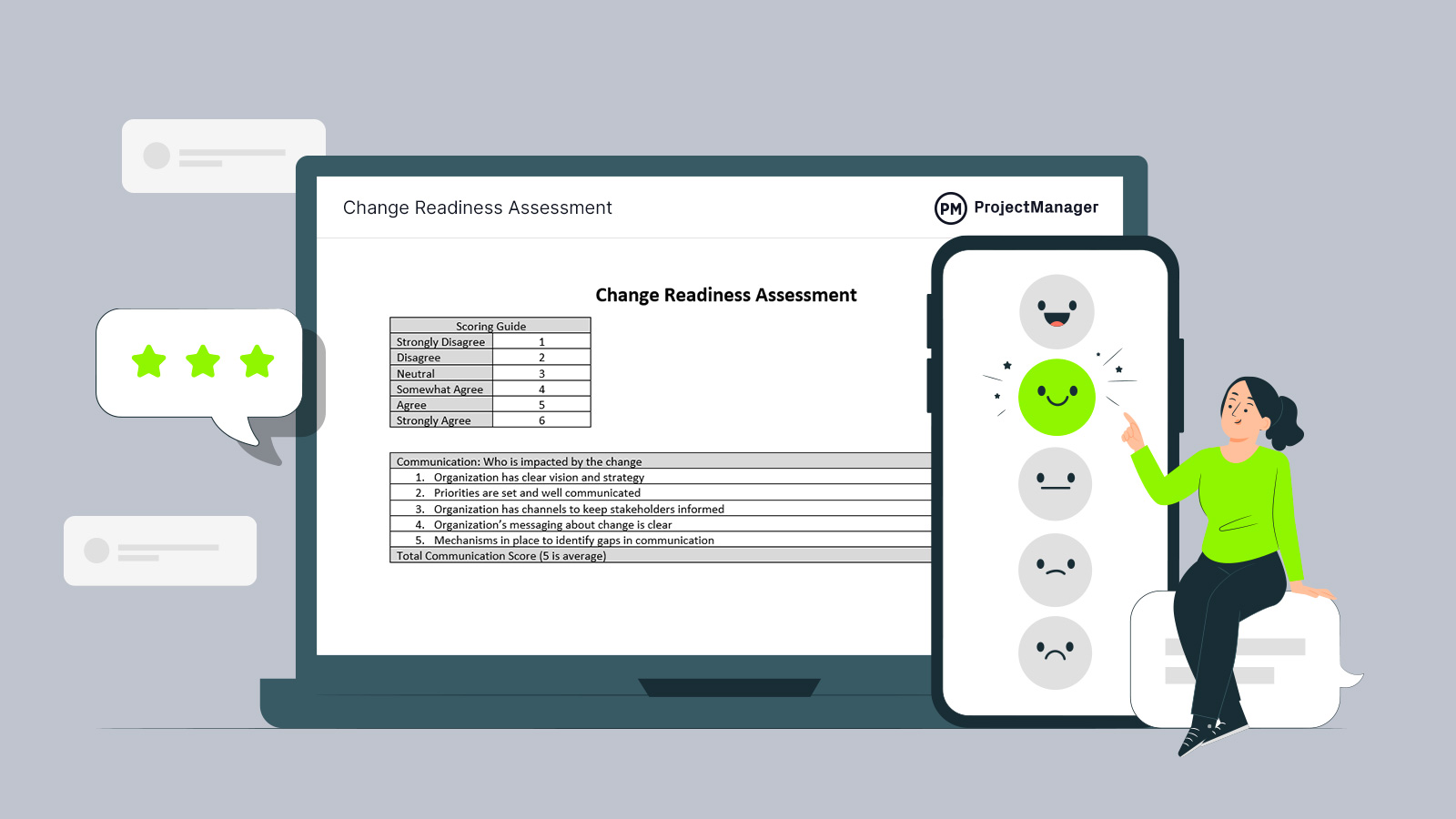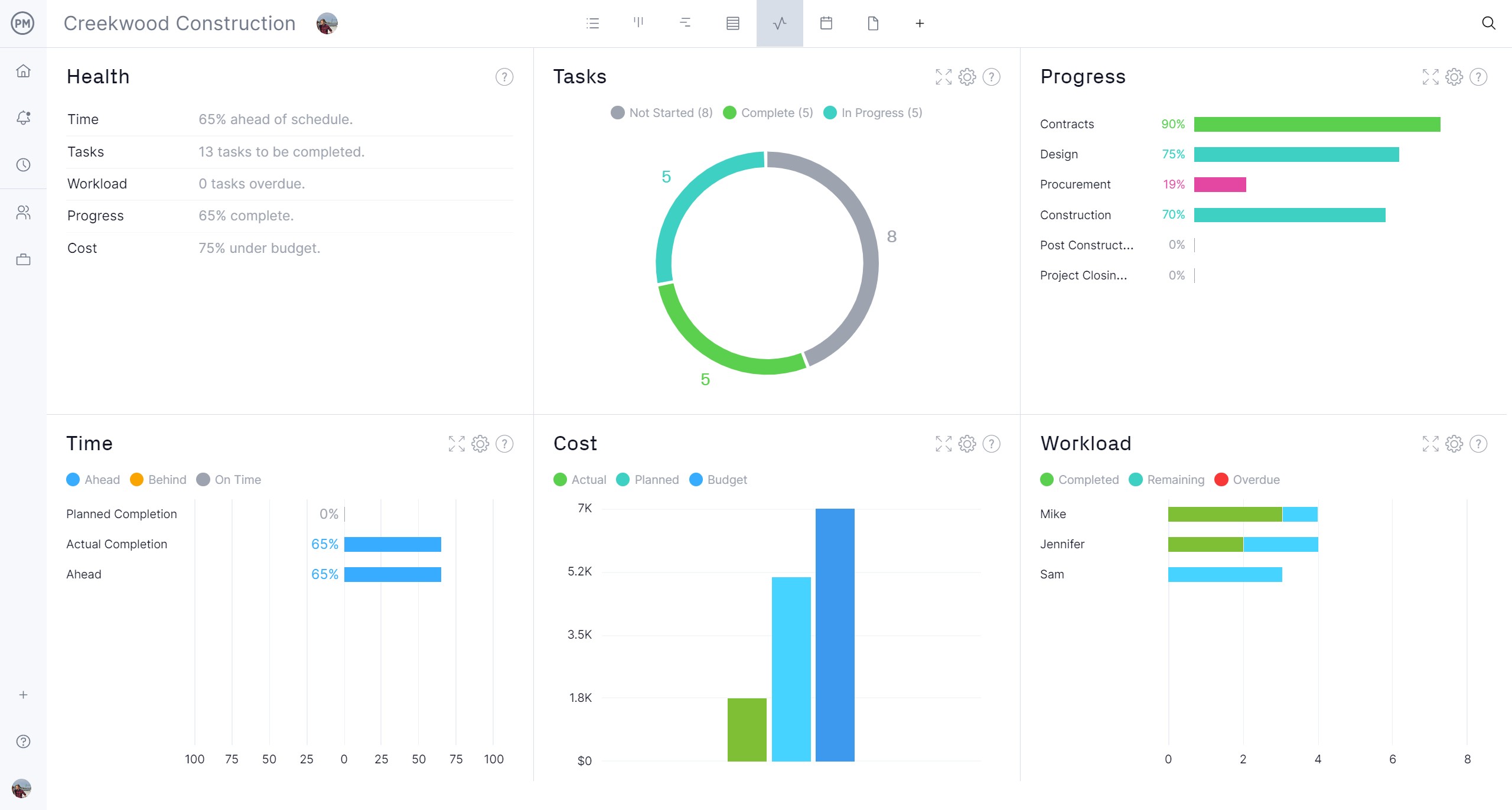Companies specializing in professional services are often employed to shepherd organizational change. That doesn’t mean there isn’t resistance to change. Resistance to change is almost always hand-in-hand with change as it’s human nature.
How can professional services or anyone combat resistance to change? First, one must understand it and the various types of ways that it expresses itself. Then, get to the root of what’s causing that resistance to change and learn how to overcome it.
What Is Resistance to Change?
Resistance to change is simply a desire to not adapt to a new way of thinking, processes or environment, to name only a few examples. Resistance to change can show itself in different situations, from personal life to relationships and even organizational change.
Examples of resistance to change can run the gamut from a strike, protest or other public confrontation to what’s called micro-aggressions, which are subtle actions or use of language. In business, it can be due to risks to the company or just not wanting to change the way things have always been done.
It’s important to push back against complacency, especially in business. As noted, professional services are hired to implement change, but that doesn’t mean they won’t experience resistance to change. In that case, project management software will help facilitate the change and get everyone on board.
ProjectManager is award-winning project and portfolio management software that has features to create timelines for change implementation plans. The best way to respond to resistance to change is by having a well-defined plan that gets one from where they are to where they want to be. Gantt charts can do this, link task dependencies and filter for the critical plan. Plans can be shared and collaborated on, which involves everyone in the process, and a baseline can be set to keep track of the plan against the actual execution to ensure it remains on schedule. Get started with ProjectManager today for free.

Types of Resistance to Change in the Workplace
Resistance to change comes in many different varieties and there isn’t one way that resistance to change is expressed. To best manage and overcome resistance to change, the first step is to define the type of resistance to change one is dealing with. Here are some common types of resistance to change.
Active Resistance
Active resistance to change is direct, vocal and provocative. It’s negative and outspoken and can include head-on conflict, sarcasm, defiance, increased problem spotting without offering solutions, open criticism of the change management process, starting rumors or even sabotaging the change.
Passive Resistance
Passive resistance to change is more of a quiet refusal to engage with the new situation or process. Some behaviors that are exhibited in passive resistance to change can include showing public support but not implementing change, procrastinating, withholding information or effort and not attending training or meetings related to the upcoming change.
Constructive Resistance
Less negative than the above, constructive resistance to change is when someone disagrees about the change but remains actively engaged in the process. In other words, they might have reservations or even resentment, but understand the change and how it impacts them and others.
Emotional Resistance
Emotional resistance to change is when someone responds by feeling stressed and uneasy. It’s manifested physically by having a high heart rate, difficulty concentrating, denial, fear, frustration, resentment, eye-rolling and being disengaged from conversations. It’s often a natural reaction to change but still must be addressed and overcome.
Behavioral Resistance
Behavioral resistance to change is a group or individual response to change when it threatens their culture or position of power. This, too, is a natural response and is proportional to the size of the discontinuities introduced into the culture.

Get your free
Change Readiness Assessment Template
Use this free Change Readiness Assessment Template for Word to manage your projects better.
Cognitive Resistance
Cognitive resistance to change refers to cognitive dissonance about the change. It impacts a person’s self-perception and social standing. It shows itself in skepticism, criticism or rationalization.
Systemic Resistance
Systemic resistance to change is when a system rejects an attempt to change. It’s also known as organizational resistance, barriers to change or policy resistance.
What Are the Main Causes of Resistance to Change?
Now that the types of resistance to change have been identified, the next step is to understand what is causing that resistance to change to respond to it. There are many causes for resistance to change, the following are some of the main ones.
Lack of Trust
If there’s a lack of trust in the leadership or the organization, there’s resistance to change because people don’t believe that the powers are acting in their best interest. Trust, of course, must be built slowly over time. Lack of trust is a large hurdle to clear.
Fear of Failure
Fear of failure means those who are either going to implement the change or are impacted by the change don’t have the confidence in their abilities to adapt to it. This can make them feel threatened by their perceived shortcomings and they’ll protect themselves by resisting change.
Poor Communication
One of the main reasons for resistance to change is poor communication. There are many forms of poor communication. If the communication isn’t clear or it’s condescending, it won’t be effective. Also, communication involves listening. Without seeking feedback it’s less likely to get buy-in.
Related: Free Communication Plan Template
Lack of Resources, Training or Support
Resistance to change can be caused when employees don’t feel they’re prepared to adapt or adopt the new processes due to a lack of onboarding. There can also be training that’s missing from the process that will help clear the hurdle of the initial learning curve. Without support, change is almost always going to meet with resistance.
How to Overcome Resistance to Change in an Organization
Once one knows the types of resistance to change and the underlying causes of that resistance to change, then comes the hard part: overcoming resistance to change. It might be difficult, but it’s not impossible. Here are some strategies that can help.
1. Gather Feedback From Employees
If employees aren’t feeling heard and there are communication issues, then gathering feedback from employees is a great way to let them feel heard and part of the process. This involves listening, creating clear channels of communication and making employees feel welcome and part of the larger conversation.
2. Identify the Type of Change Resistance
Naturally, resistance to change can’t be overcome without first identifying the type of resistance to change. Otherwise, one is simply walking in the dark. While the answer might be found this way, it’s more likely that nothing is solved and things can be made worse.
3. Conduct a Root Cause Analysis
A root cause analysis is a process that helps to identify the underlying cause of problems so that the appropriate solutions can be implemented. This is effective by not running to put out symptoms, but seek the root cause of those symptoms and end them at the source.
4. Take Measures to Address Employee Concerns
Listening to employees without addressing the issues they bring up is a surefire way to continue their resistance to change. In terms of cognitive resistance, in many cases, people are opposed to a change because they don’t fully understand it. In such cases, management must provide enough information and training for employees to understand the change, its benefits and what’s expected of them
5. Assess Organizational Change Readiness
The better equipped the organization is, the easier it is to minimize resistance to change. Improving change readiness means psychologically and behaviorally preparing an organization’s workforce to embrace and implement change.
6. Make a Change Management Plan
Another way to overcome resistance to change is by having a change management plan, which is a document outlining the business strategy and procedures for implementing organizational changes or new projects. It will define activities, roles and how to manage and control change. Having this plan will often be enough to overcome the resistance to change.

Tips & Strategies for Managing Resistance to Change
It can be difficult to get people to change, especially if they’re resistant to change, but it can be done. We’ve shown the types of resistance, the underlying cause and some solutions to overcome that resistance to change. Here are some other tips and strategies to help.
- Identify Gaps: Conduct a gap analysis to compare the current state with the desired future state to help get from one point to another.
- Implement Changes Gradually: Reduces feelings of being overwhelmed and allows for continuous assessment and adjustments as needed.
- Establish a Change Control Board: This group will assess and approve changes proposed to a project, usually after it’s started.
- Gauge the Potential Impact of Your Change: It’s essential to assess the effectiveness of implemented changes and identify areas for improvement.
Free Change Management Templates
Another way to overcome resistance to change is by change management, which helps to implement and control change. To help with those processes, there are free project management templates. Our site has over 100 free project templates for Excel and Word that address every phase of the project for multiple industries. Below are a few free change management templates to download now.
Change Log Template
Use this free change log template for Excel to track the effort of that change. It allows project managers to identify change, assign team members to implement it and track its progress.
Change Impact Assessment Template
This free change impact assessment template allows users to understand how a potential change will impact the people, processes and projects of an organization.
Change Order Template
Popular in construction, this free change order template for Word captures the reason for the change, what needs to be done and how long it will take to complete.
How to Manage Change Implementation With ProjectManager
Change management templates are not suited for managing change. Templates are static documents that must be manually updated and are not conducive to collaboration. Change requires a more agile approach, something that can monitor in real time and track progress to ensure that those changes are implemented or mitigated. Project management software provides the flexibility needed to address change.
ProjectManager is award-winning project and portfolio management software that can plan, manage and track change implementation in real time. There are also features to manage tasks for cross-functional teams with time and cost-tracking tools.
Manage Tasks With Multiple Work Management Tools
Change is implemented by a team often across different departments. While the manager can plan on Gantt charts, teams require unique tools to execute their tasks. With our multiple project views, managers can share plans across kanban boards to visualize workflow and task lists, which are all updated simultaneously to keep everyone working on the same page. There’s also a calendar view for a monthly overview of the project, which stakeholders can view to stay updated.

Track Costs and Progress in Real Time
It’s important to monitor the progress and costs to make sure that change is implemented on schedule, without going over budget. Managers can get a high-level overview of the project whenever they want by toggling over to the real-time project or portfolio dashboards. They automatically collect live data and display it on easy-to-read graphs and charts that track key performance indicators (KPIs), such as time, cost, workload and more. For more detail, there are customizable reports that can also be shared with stakeholders to keep them up to date.

Related Change Management Content
Overcoming resistance to change is only part of the larger change management process. For those who want to delve deeper into this subject, there are many opportunities to do so on our site. We publish weekly blogs, ebooks, guides, tutorial videos and free templates. Here are some of the recent pieces on change management.
- What Is Change Management? Process & Models Explained
- 10 Free Change Management Templates for Excel and Word
- What Is Change Control in Project Management?
ProjectManager is online project and portfolio management software that connects teams whether they’re in the office, out in the field or anywhere in between. They can share files, comment at the task level and stay up to date with email and in-app notifications. Join teams at Avis, Nestle and Siemens who use our software to deliver successful projects. Get started with ProjectManager today for free.



